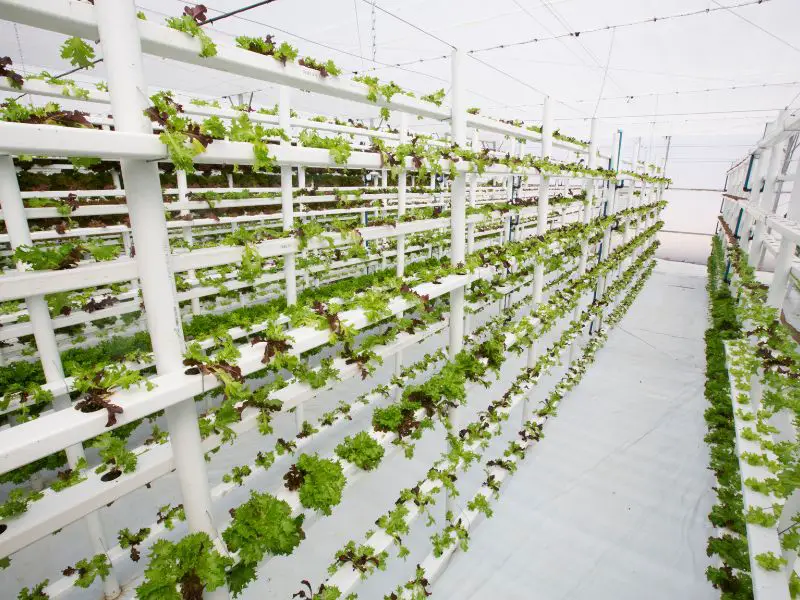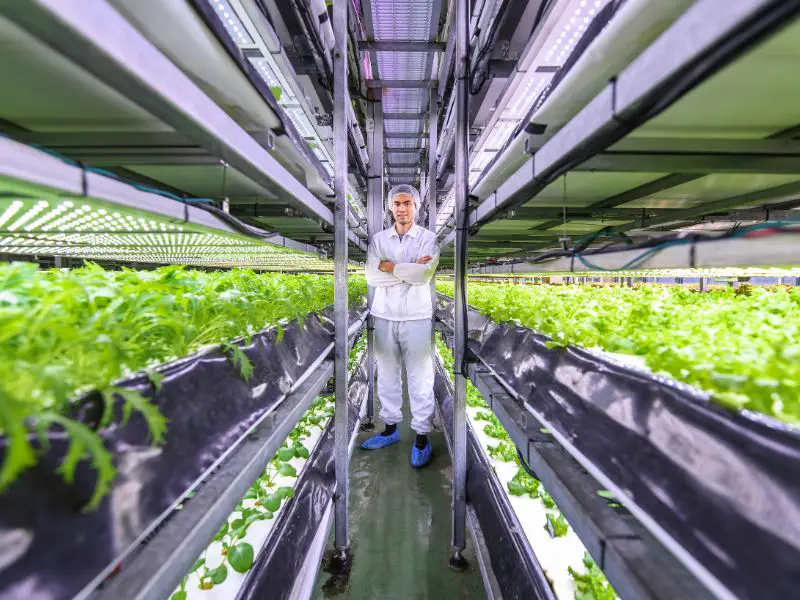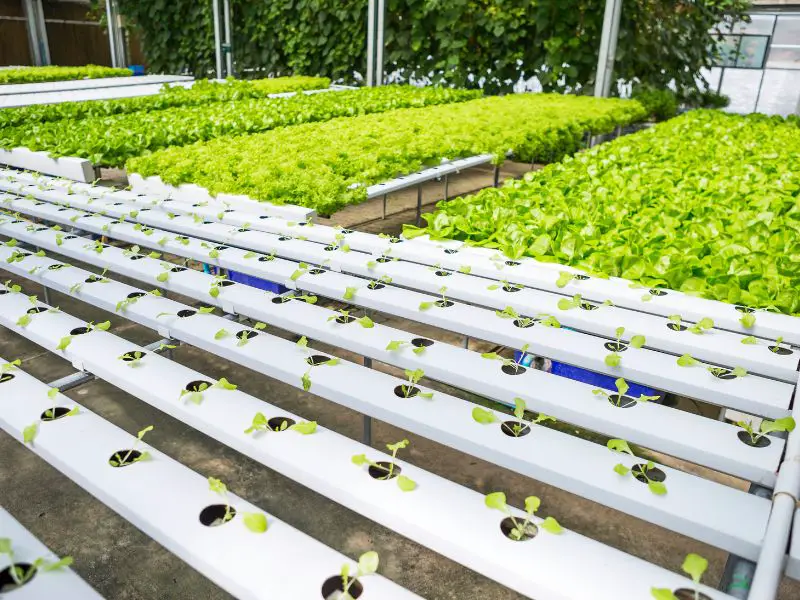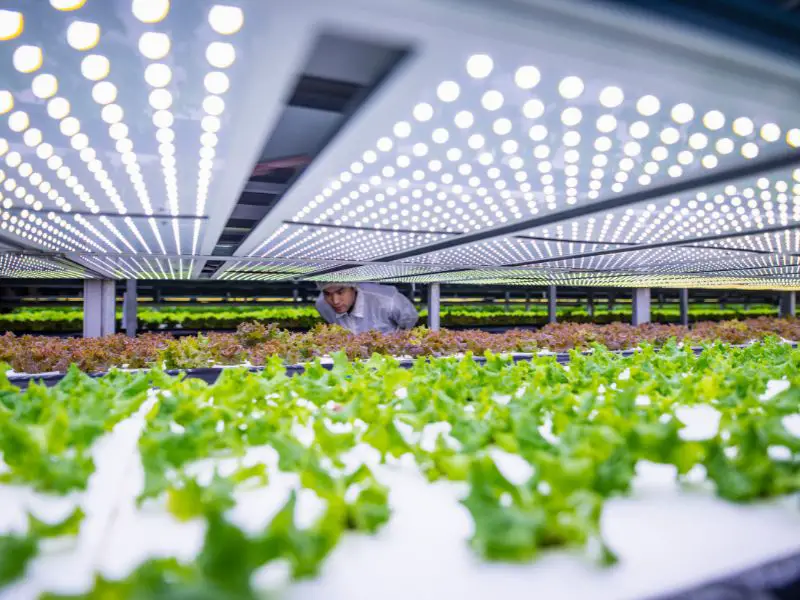Have you heard of vertical farms? They’re the newest trend in agriculture and are quickly gaining popularity. But what exactly are they and why are they becoming so popular?
Agriculture has been around for thousands of years, but with the world’s population continuing to grow, traditional farming methods are no longer sustainable. This has led to the development of innovative farming techniques, such as vertical farming.
Crops are grown vertically in layers using artificial lighting and climate control in vertical farms. It takes up less space, uses less water, and produces more crops than traditional farms. In this article, we’ll explore the reasons why vertical farms are becoming the most popular form of agriculture in recent history.

What Is Vertical Farming?
Vertical farming is a technique of growing plants vertically. In this approach, plants never come into contact with the ground while being covered with soil and water to ensure that they’re watered and fed accordingly. It’s more efficient to produce crops this way, as vertical farming does not use too much land, fertilizers, water, pesticides, or machinery.
This reduces the costs and resources required to grow crops and makes it more relevant to use alternative natural resources such as sunlight and rainwater to irrigate crops. The growing model also reduces the costs of energy efficiency by occupying less physical land.
How Does Vertical Farming Work?
You can use up to 90% less water to grow crops using specific techniques called ‘hydroponics‘ or ‘aquaponics.’ The vertical-farming method replaces soil and uses only the water reservoir for the crop to invest in its growth. To grow a vertical farm, you need to use equipment that might cost some money; however, you can save money on heating and cooling once the grow system and greenhouse are ready.
There are already different systems available, ranging from patio gardens built from old pallets to warehouses and greenhouses.
To understand how vertical farming works, you need to know four things: 1. The building’s layout, 2. Lighting, 3. Growing medium, and 4. Its long-term features.
First, vertical farming’s primary goal is to grow more food per square meter. To reach this goal, crops are grown in layers stacked on top of each other in a tower life structure.
Second, the right amount of light is kept in the room with the right mix of natural and artificial lights. There are ways to improve lighting efficiency, such as using beds that move.
Third, growing mediums like aeroponics, aquaponics, or hydroponics are used instead of soil. In vertical farming, peat moss, coconut husks, and other non-soil mediums are often used.
Lastly, the energy costs of farming are offset by the vertical farming method’s use of sustainable features. Also, 95% less water is used in vertical farming.
How Vertical Farms Can Help You
Vertical farms have great potential and are the kind of farming that will be used in the future. Here are some things that vertical farming might help you with.
1. Preparation for the Future
By 2050, about 68% of the world’s population is expected to live in cities. As the world’s population grows, the demand for food and resources will also grow. Navigating such a challenge could be helped by developing and using more vertical farms.
2. Increased And Year-Round Crop Production
Vertical farming allows the production of more crops from the same amount of land. One acre of indoor space is comparable to at least four to six acres of outdoor capacity. An independent calculation suggests that a 30-story skyscraper with a base area of 5 acres could generate the equivalent of 2,400 acres of traditional horizontal farming.
3. Increased Production of Organic Crops
Vertical farming enables us to cultivate pesticide-free and organic foods since crops are grown in a regulated indoor environment without chemical pesticides. The indoor climate is controlled and protected from pests, weeds, diseases, and weather events.
4. Not Affected by Weather Conditions
Natural disasters like heavy rains, cyclones, floods, or extreme droughts—events that are happening more often due to global warming—can harm crops in a field. Indoor vertical farms provide higher harvest yield reliability throughout the year since they are less likely to take the full brunt of bad weather.
5. Increased Food Security And Sustainability
Vertical growing allows for year-round food production that does not depend on external weather conditions. Additionally, vertical farming provides food security to places that experience frequent natural disasters such as flooding and drought.

6. Increased Efficiency For Agricultural Management
With vertical farms, you can grow crops that grow in all seasons and can be exchanged globally throughout the year. Vertical farms are suitable for growing berries, vegetables, fruits, and many other types of crops as well. Additionally, advanced technology in vertical farming can be used to improve the health and quality of crops to reduce food waste and spoilage.
7. Reduces Pollutants and Offers High-Quality Food
Growing crops indoors means fewer pollutants than farms located outdoors, which contributes to the long-term health of the people who eat these crops. Crops grown indoors also have fewer pollutants, such as soil, pesticide residues, and heavy metals. Vertical farms also enable the production of crops that are not genetically modified.

8. Human and Environmentally Friendly
Vertical farms are a modern solution to the challenge of feeding the world’s growing population while minimizing the negative impact on the environment. Vertical farms use vertically stacked hydroponic farming systems to build more efficient farms with less waste and environmental impact. Vertical farms can grow anywhere and do not require much land and water. This makes it possible to feed densely-populated areas with minimal impact. Vertical farming uses sustainable building materials such as LED lights to increase energy efficiency.

Bottomline
Over the past century, the science and technology of food production have been improving very fast. This has enabled farmers to grow more food on less land. With vertical farming, we can further increase productivity while remaining sustainable. However, there is still a long way to go to provide food security for the world’s growing population.
Start planting today with these gardening guides and tips: Designing a Permaculture Garden, Indoor Vegetable Garden, Backyard Farming

